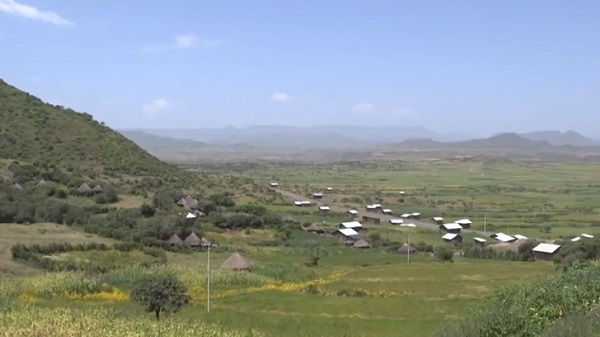
Of the land in Amhara National Regional State (ANRS), less than 2 percent forested land remains, and efforts are underway to restore degraded and deforested areas.
DEBRETABOR, Ethiopia (Mongabay)–At a tree nursery in Ethiopia’s Meket district, young men and women pack small plastic bags with soil. The indigenous and exotic species grown here were previously sown directly into the earth, but the growth efficiency was less than 50 percent, according to Melak Dagnew, a forest development project coordinator in the country’s Meket district.
With the introduction of the plastic bags, into which the seedlings are first planted, and a consistent regimen of post-plantation care — watering, weeding, adding compost — the efficiency rate has risen to 93 percent, Dagnew says, and the trees have grown as much as 5 meters (16 feet) in just a year.
“Soil erosion, land degradation and, as a result, a reduction of productivity were observed widely,” says Melak. Meket is one of the four districts in Ethiopia’s Amhara National Regional State (ANRS) where land restoration pilot projects are being carried out.
“The lack of forest products like fuelwood, wood for fencing and housing purposes for the community were observed because of population increase followed by the consumption of natural forests in a short period of time,” he said.
———————————————-
———————————————-
Known for its densely populated highlands and rain-dependent agriculture, the ANRS is one of the more severely deforested and degraded regions in the country. Recent studies show that out of 157,000 square kilometers (60,600 square miles) of land, less than 2 percent is covered by forest.
ALSO READ: Ethiopia launches 10-year National Forest Sector Development Program
An analysis of forest coverage by Ethiopia’s Ministry of Environment, Forestry and Climate Change found that nearly 12,000 square kilometers (4,600 square miles) of forest — an area half the size of the island of Sicily — was lost between 2000 and 2013.
Only 2,460 square kilometers (950 square miles) of forest cover was gained, making the forest sector one of the top contributors to domestic greenhouse gas emissions.
Read the complete story at Mongabay
